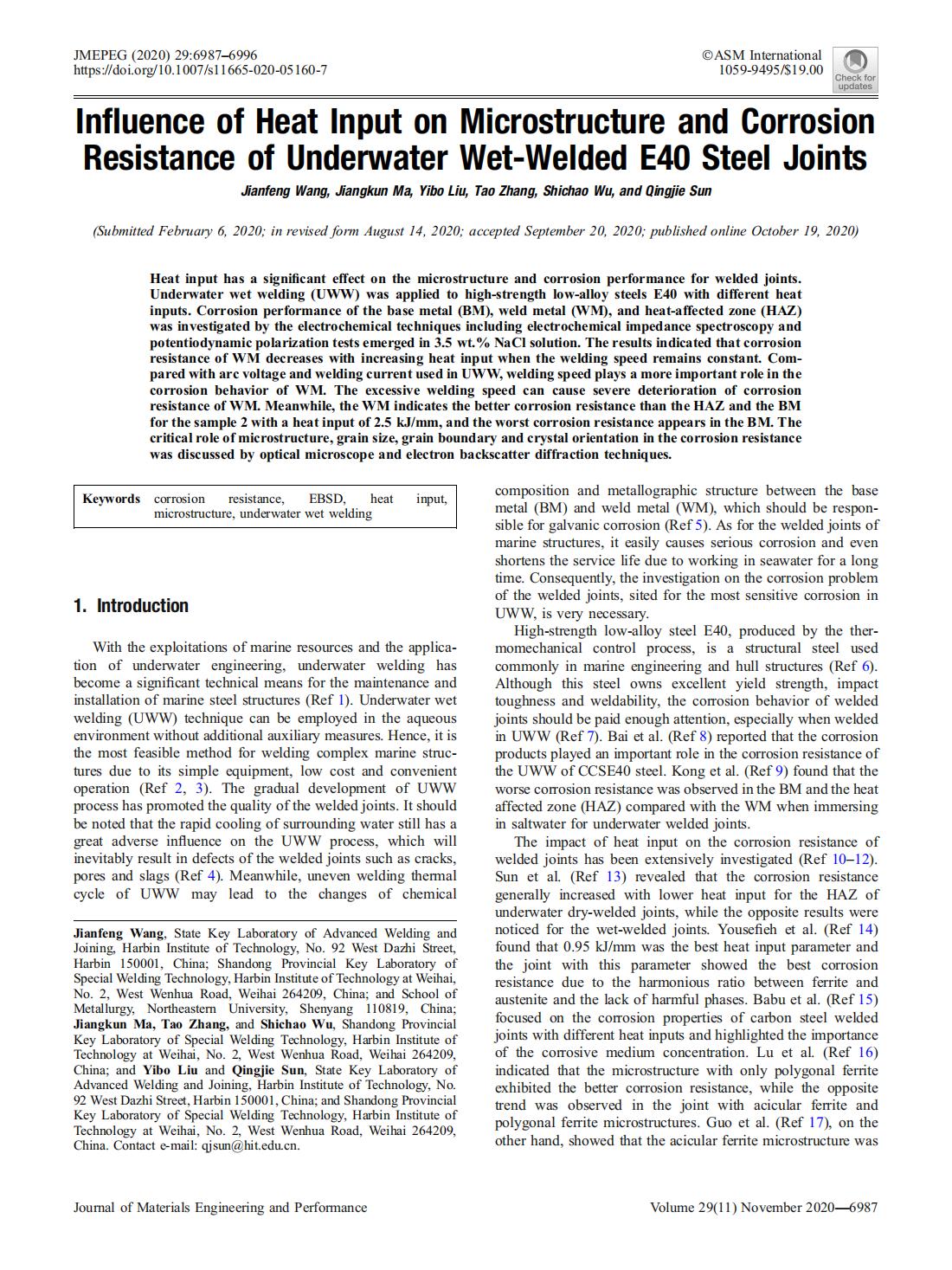Heat input has a significant effect on the microstructure and corrosion performance for welded joints. Underwater wet welding (UWW) was applied to high-strength low-alloy steels E40 with different heat inputs. Corrosion performance of the base metal (BM), weld metal (WM), and heat-affected zone (HAZ) was investigated by the electrochemical techniques including electrochemical impedance spectroscopy and potentiodynamic polarization tests emerged in 3.5 wt.% NaCl solution. The results indicated that corrosion resistance of WM decreases with increasing heat input when the welding speed remains constant. Compared with arc voltage and welding current used in UWW, welding speed plays a more important role in the corrosion behavior of WM. The excessive welding speed can cause severe deterioration of corrosion resistance of WM. Meanwhile, the WM indicates the better corrosion resistance than the HAZ and the BM for the sample 2 with a heat input of 2.5 kJ/mm, and the worst corrosion resistance appears in the BM. The critical role of microstructure, grain size, grain boundary and crystal orientation in the corrosion resistance was discussed by optical microscope and electron backscatter diffraction techniques.
